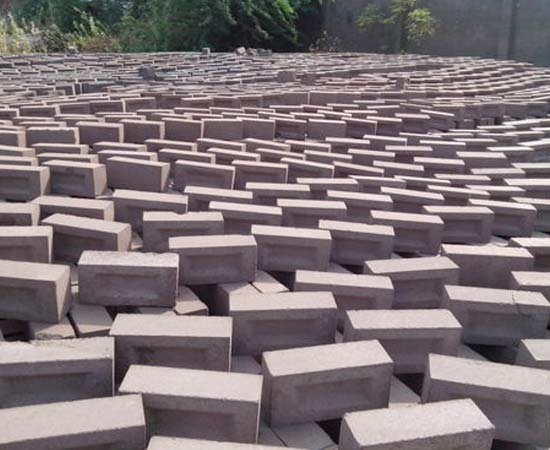India is one of the world’s largest producers of bricks, producing over 240 billion bricks annually. With such a large production capacity, India has become a major exporter of bricks to several countries across the world. India’s brick exports have been growing steadily over the years, and the country is now one of the top exporters of bricks globally.
Export of bricks from India has been driven by several factors, including the high quality of Indian bricks, the availability of skilled labor, and the low cost of production. India’s brick-making industry has been around for centuries and has perfected the art of brick-making over time. Indian bricks are known for their strength, durability, and aesthetic appeal, making them highly sought after in the global market.
One of the key markets for Indian brick exports is the Middle East, where there is a high demand for bricks for construction purposes. The United Arab Emirates (UAE), Qatar, and Saudi Arabia are some of the top destinations for Indian brick exports in the Middle East. The demand for bricks in these countries has been driven by the booming construction industry, with several large-scale infrastructure projects underway.
Another significant market for Indian brick exports is Africa, where the construction industry is also growing rapidly. Countries such as Kenya, Tanzania, and Nigeria have seen a surge in demand for bricks, driven by the need to build affordable housing for their growing populations. India has been able to capitalize on this growing demand by providing high-quality bricks at competitive prices.
The United States is also a significant market for Indian brick exports, with several Indian companies exporting bricks to the US. The US market is highly competitive, with several domestic brick manufacturers. However, Indian brick manufacturers have been able to establish a niche in the market by offering high-quality bricks at competitive prices.
The Indian government has been supportive of the brick-making industry, providing several incentives and subsidies to promote exports. The government has also set up several export promotion councils to support Indian brick exporters and help them tap into new markets. These initiatives have played a significant role in driving the growth of Indian brick exports.
The export of bricks from India has also had several positive impacts on the Indian economy. The brick-making industry is a significant employer in India, providing employment to millions of people across the country. The growth of the industry has also led to the development of several ancillary industries, such as transportation, packaging, and logistics, providing additional employment opportunities.
The export of bricks from India has also contributed to the country’s foreign exchange earnings, with brick exports generating significant revenue for the country. The growth of the industry has also led to an increase in tax revenue for the government, which can be used to fund social welfare programs and infrastructure development.
Challenges Faced:
However, the brick-making industry in India is not without its challenges. One of the major challenges faced by the industry is the use of traditional brick kilns, which are highly polluting and contribute to air pollution. The Indian government has taken several steps to address this issue, including the introduction of cleaner technologies and the closure of traditional brick kilns that do not meet environmental standards.
Another challenge faced by the industry is the competition from other brick-making countries, such as China and Bangladesh, which also export bricks to several countries across the world. These countries have been able to offer competitive prices, which has made it difficult for Indian brick manufacturers to compete in some markets.
To address the challenge of competition, Indian brick manufacturers must continue to focus on producing high-quality bricks at competitive prices. This can be achieved by adopting innovative technologies, increasing efficiency, and reducing costs.
Moreover, Indian brick manufacturers must also explore new markets and expand their customer base to reduce their dependence on a few markets. This will help to diversify their revenue streams and reduce the impact of market fluctuations.
The Indian government can also play a crucial role in supporting the growth of the brick-making industry by providing further incentives and subsidies. This will help to reduce the cost of production and make Indian bricks more competitive in the global market. Additionally, the government can also invest in research and development to develop cleaner technologies and reduce the industry’s environmental impact.
Conclusion:
In conclusion, the export of bricks from India is a significant contributor to the country’s economy and has the potential to continue its growth trajectory in the coming years. The industry’s success will depend on its ability to address its challenges and capitalize on the opportunities presented by a growing global market. With the support of the government and the adoption of innovative technologies, the Indian brick-making industry can become a major player in the global market, generating employment and foreign exchange earnings for the country.



